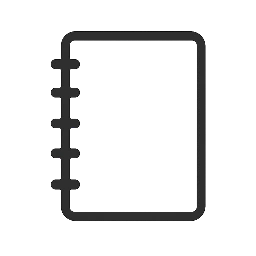Choosing the right fitness equipment can feel overwhelming with so many options on the market. The best gear for you depends on your goals, available space, budget and training preferences. This guide breaks down key considerations and offers practical tips to help you build a home gym or select gear that keeps you motivated and safe.
Identify Your Goals and Training Style
Start by clarifying what you want to achieve. Are you focused on building strength, improving cardiovascular fitness, enhancing flexibility or a mix of all three? For strength training, free weights, kettlebells, resistance bands and multi‑functional machines are ideal. Cardio enthusiasts should prioritise treadmills, stationary bikes or rowing machines. If mind–body wellness is your priority, yoga mats, stability balls and Pilates reformers might be more suitable. Understanding your goals ensures you invest in equipment you’ll actually use.
Assess Your Space and Budget
Measure the space where you’ll work out and consider ceiling height, flooring and ventilation. Larger equipment like treadmills and squat racks require ample room, while compact options such as adjustable dumbbells and foldable bikes are perfect for small apartments. Set a realistic budget that includes accessories and potential subscriptions for interactive fitness platforms. Remember that high price doesn’t always equal high quality—plenty of mid‑range options deliver excellent performance and durability.
Key Features to Look For
When comparing products, pay attention to materials, adjustability and safety features. For example:
- Adjustability: Choose dumbbells, benches and resistance machines that offer a wide range of settings so you can progress as you grow stronger.
- Multi‑Functionality: Equipment that targets multiple muscle groups, such as cable stations or all‑in‑one home gyms, saves space and money.
- Build Quality: Look for steel frames, secure locking mechanisms, non‑slip grips and warranties that cover normal wear and tear.
- Safety and Stability: Machines should feel solid during use, with no wobbling. Cardio equipment should have emergency stop features and handrails if needed.
- Technology Integration: Smart devices can track workouts, adjust resistance automatically and offer virtual coaching, but they may come with subscription fees.
Cardio Equipment Considerations
Treadmills are great for walkers and runners; look for strong motors (at least 2.5 HP for running), wide decks, shock absorption and foldable designs if space is limited. Stationary bikes offer low‑impact cardio; decide between upright, spin and recumbent styles based on comfort and intensity. Rowing machines work the whole body—choose between air, magnetic or water resistance. Ellipticals provide joint‑friendly workouts with adjustable stride lengths. Test machines if possible and read user reviews to gauge durability and noise levels.
Strength Training Options
Free weights like dumbbells, kettlebells and barbells offer versatility and functional movement training. Adjustable dumbbell sets allow you to increase weight without buying multiple pairs. Resistance bands are lightweight and inexpensive; select a set with different resistance levels. For larger investments, consider power racks with pull‑up bars and safety catches, or functional trainers with pulleys for full‑body workouts. Always factor in the cost of weight plates and storage solutions.
Accessories and Flooring
Don’t overlook the small items that enhance your workouts. A thick, cushioned mat protects floors and joints during bodyweight exercises. Foam tiles or rubber flooring absorb shock and reduce noise. Mirrors can help maintain proper form, while storage racks keep weights organised and your space tidy. Gloves, belts and lifting straps improve grip and support heavy lifts. Heart rate monitors and fitness trackers provide real‑time feedback and keep you accountable.
Where to Shop and Research
Buying online offers convenience and often lower prices, but visiting a physical store lets you test equipment and ask questions. Read independent reviews and watch video demonstrations to understand assembly, ease of use and long‑term performance. Check warranty terms and return policies—reputable brands typically offer at least one year of coverage. Look for seasonal sales around holidays and New Year’s when retailers offer significant discounts on fitness gear.
Final Thoughts
take an informed decision and invest in gear that supports your long-term well-being.

Leave a Reply